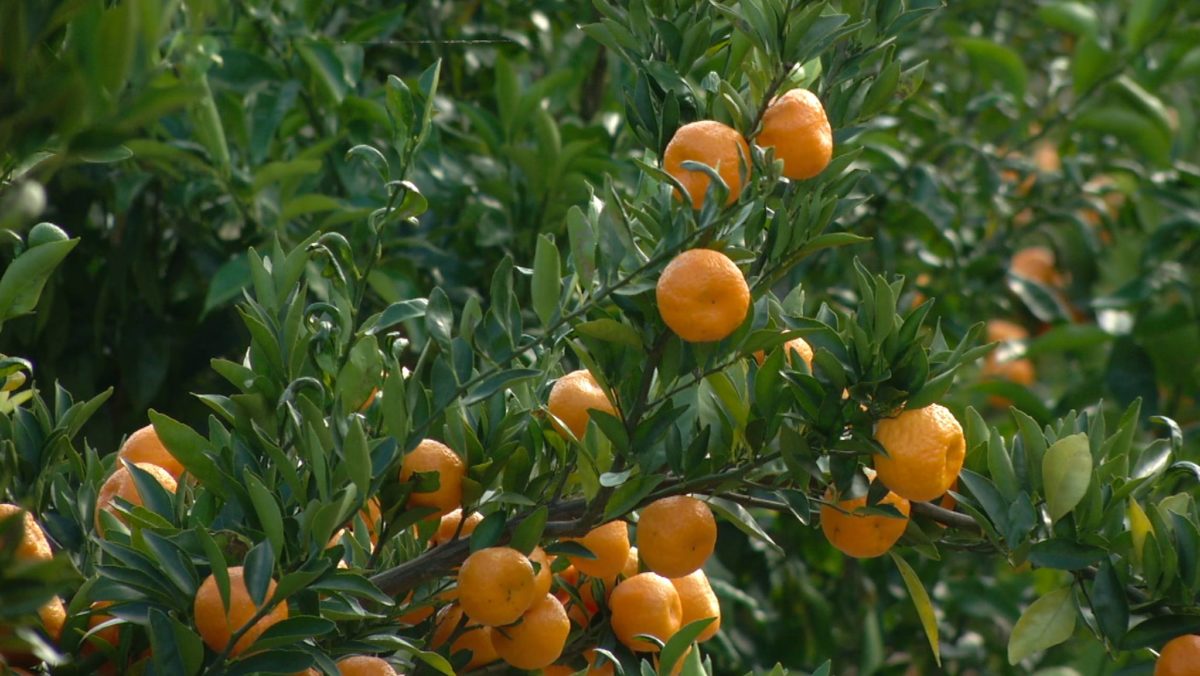TIFTON, GA – To promote and educate people about Georgia citrus… that’s part of the Georgia Citrus Association’s mission statement, and that’s what they did recently at their second annual meeting in Tifton. Around 300 people came to learn about this rapidly growing industry.
“It is exploding, we doubled last year in 2017, we doubled the number of trees in the state from 21000 to 42000,” says Lindy Savelle, President of the Georgia Citrus Association. “In 2018, people are starting to plant in March, we could potentially double again. It’s incredible.”
Those at the conference got the chance to meet with vendors, network with one another, and attend breakout sessions, each educating those there on various topics, something that Lindy Savelle says is most important.
“The experts in Florida will tell you to take it slow and easy, to learn about how to grow healthy citrus and to protect the golden egg opportunity that you have in Georgia. We’re sitting here, our state’s not rampant with disease, and so, what we’ve got to do is make sure that we protect the opportunity and not kill it before we get it off the ground,” says Savelle.
One of the big topics was on pests and diseases. The main one, of course, being HLB, or citrus greening, which is causing major problems in Florida and could be an issue here in Georgia.
Jamie Burrow, Extension Program Manager with the University of Florida says, “the challenges with citrus greening is that it only takes one psyllid to have a tree become infected by HLB, and with HLB, the bacteria can be in the tree before you see the symptoms.”
Of course, after hearing about pests and diseases, they also got the chance to hear about what’s being done to combat them. One big way they’re spread is through human assistance, and the Department of Ag is working to solve that problem.
Mike Evans, Program Manager for the Georgia Department of Agriculture says, “the number one way that plant pests, insects, diseases have been moved in the past is through human movement. We take a plant from one place, and then we take the plant to another place.”
One method the Georgia Department of Agriculture, as well as the USDA is using to stop spreading is regulations. It may sound daunting, but they are trying to protect the huge investments at risk.
“We don’t know how big citrus is going to get, but there’s a possibility, like you said, that these folks are going to be investing lot of money and this is something we want to work with the folks on,” says Evans.
Growers also got to learn about ways to sell their new crop. Matthew Kulinski from the Georgia Grown marketing team spoke in a breakout session on what the Georgia Grown program is doing to help market Georgia citrus.
“The goal of the Georgia Department of Agriculture’s marketing division is to help farmers sell their products. That’s our main challenge and our main goal and all of our plans are centered around that mission. We are working with citrus farmers right now to be able to identify the right market for them,” says Kulinski.
He aslo explained how there are some marketing challenges they are going to face with this being a new crop from Georgia.
“One of the first challenges we’re going to have is not many people are aware of Georgia citrus, and what Georgia has to offer,” says Kulinski. “So, a lot of education will come into play in being able to educate both the retailers as well as consumers about what to expect from Georgia citrus and what Georgia citrus is available.”
By: John Holcomb

